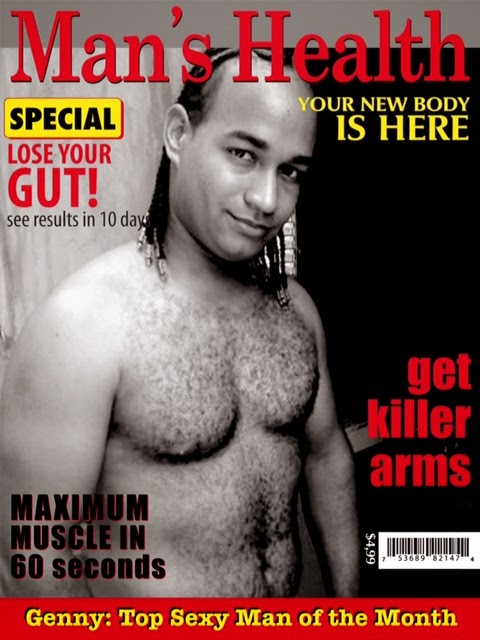Black Lives Matter gave him fame, but Baltimore isn't biting

|
| In
this March 26, 2016 photo, Baltimore mayoral candidate DeRay Mckesson
chats with campaign volunteers before canvassing in Baltimore. Mckesson
is known on the national stage for his role in Black Lives Matter, but
he's struggling as he campaigns for mayor in his hometown. |
BALTIMORE
(AP) -- DeRay Mckesson, the Black Lives Matter activist turned
mayoral candidate, is door-knocking on the streets of Charles Village.
This is not the Baltimore of "The Wire," but rather a tidy neighborhood
of pastel townhomes in the shadow of Johns Hopkins University.
For
two blocks, nobody answers a rap. Then Ralph Moore, himself an activist
and a lifelong resident, rushes up to Mckesson to shake his hand - and
to break the bad news: Moore is voting for Sheila Dixon, the former
mayor who resigned amid ethics charges and is running again. She's one
of the front-runners in polls ahead of Tuesday's Democratic primary -
the de facto election in this majority African-American city.
"The
problem is people don't know you here," Moore tells Mckesson, who has
held court with President Barack Obama, been endorsed by actress Susan
Sarandon and has 365,000-plus Twitter followers, including Beyonce. "I
saw you in Stephen Colbert's chair when I was channel surfing, but I
don't know you."
Mckesson is one of the most
recognizable faces to emerge from the Black Lives Matter movement - a
former educator who built a national following after he left his
then-home and job in Minneapolis in August 2014 for Ferguson, Missouri,
to document the rising anger over race relations after the police
shooting of Michael Brown.
But before Black
Lives Matter birthed @DeRay, he was a self-proclaimed "son of
Baltimore," born and raised in this city still striving to move past its
own racial strife a year after Freddie Gray died from an injury
suffered in police custody and riots erupted.
The
path from activist to politician is one many black leaders have
navigated successfully, but Mckesson is struggling. He entered the
mayoral race late, he's deep down in the polls, his skeptics are
plentiful, and observers have been left asking: What, then, is the next
step for him, and for the movement that helped launch him?
"He's
seeking his next big stage, and he's not going to be the only one doing
it," said Lester Spence, a political science professor at Johns Hopkins
and a Baltimore resident.
Mckesson's campaign comes as both Baltimore and the Black Lives Matter movement wrestle with growing pains.
Gray's
death further inflamed the movement, an amorphous and decidedly
leaderless undertaking born out of a series of deaths of
African-Americans at the hands of police officers. The crusade took off
on social media as a hashtag and spurred street demonstrations, and has
remained in the spotlight this presidential election season, with
activists disrupting candidate rallies, demanding to be seen and heard.
Yet
some within the movement have shunned more traditional paths to change.
One Black Lives Matter activist turned down an invitation to meet at
the White House with Obama and other civil rights leaders, condemning
the gathering as a photo opportunity. Mckesson attended.
Kayla
Reed, a 26-year-old activist in St. Louis who emerged from the protests
in Ferguson, said organizers are becoming more open to conventional
tactics - and Mckesson's campaign reflects that.
"A
lot of times, we're not seeing justice because of the way the laws are
written, so it only makes sense to go after the lawmakers as part of the
larger strategy," she said.
The movement has
already seen victories on the policy front. Using social media, campaign
events, voter registration drives, fundraisers, and neighborhood
canvassing, Black Lives Matter activists worked to bring about change in
several high-profile races. Among them: the election of black city
council members in Ferguson, the ouster of the Illinois district
attorney who waited more than a year to bring charges against a white
Chicago police officer who shot a black teenager 16 times, and the
primary loss for the Ohio prosecutor who declined to charge the officer
who killed 12-year-old Tamir Rice.
"Municipal elections matter," Reed said. "To achieve long-term change, you need policy and protest."
It's
that kind of thinking that drove Mckesson to seek office. As he said to
one potential voter in a Facebook chat recently: "I want to be in a
position to do work that will change people's lives. What we did in the
last 18 months was help change the conversation around the country,
knowing that conversation change leads to actual change."
Mckesson's
candidacy is in line with a tradition of black organizers who
transitioned to politics. Martin Luther King Jr. lieutenants Andrew
Young, Jesse Jackson and John Lewis went on to become mayor, run for
president, and get elected to Congress after the civil rights movement.
Barack Obama was a community organizer on Chicago's Southside before
running for public office, first as a state senator, then a U.S. senator
before his historic presidential election eight years ago.
Mckesson
was born to drug-addicted parents in West Baltimore, a story he readily
shares while campaigning. His father got clean and moved him to
Catonsville, a small, predominantly white suburb. After high school,
Mckesson left for Bowdoin College, a liberal arts school in Maine. He
was elected president of the student body, and graduated with a degree
in government and legal studies. Even then, he recognized the need to
step up to help create change.
"The people who could do the most and could be the most influential just don't get involved," he told the college paper.
But
instead of pursuing government, Mckesson went into education. He taught
sixth grade in Brooklyn through Teach for America, which places college
graduates in poor districts for two-year commitments. He later returned
to Baltimore and launched an after-school program before joining the
public school system in an administrative job. He left again in 2013,
this time for the top human resources job with the Minneapolis school
system. When Brown was shot, Mckesson drove 500 miles to Ferguson to
join the protest.
Being on the streets, he
said, "woke me up." And so Mckesson returned to Baltimore, with the
promise of a spare room at a family friend's home and a plan to run for
mayor. Hours before the Feb. 3 deadline, Mckesson filed his paperwork,
the last of 13 Democrats to declare his candidacy.
On
his agenda: plans to establish a system of community first-responders
to de-escalate violence, and hire people who have been affected by
police brutality to train officers on racism and community engagement.
"People
want hope. They want transparency ... a mayor who has a plan, who
understands the issues deeply," Mckesson said in an interview.
On
the ground, however, his efforts have met with resistance and more than
a little skepticism, especially from some of Baltimore's longtime
activists, who had been organizing around social justice issues for
years before Black Lives Matter rose into the national consciousness.
They criticize him for not engaging with them, and question whether his
campaign is merely a ploy to grow his "brand."
"Who
sent you and who will you serve?" Jamye Wooten, founder and publisher
of an online forum linking social justice issues and faith communities,
asked in a blog post. "Here you earn your stripes by serving and being
in the community when there are no cameras."
Spence,
of Johns Hopkins, said that in a city like Baltimore, with its deep
roots and personal connections, you don't "earn your stripes on Twitter
or on the protest line."
Mckesson has worked
to shed his star status during the race. On the trail, he's rarely
talked about Black Lives Matter or his role as a protester except when
explaining his social justice awakening.
At
one recent house party, a dozen people gathered in a tidy sun-filled
living room to meet Mckesson. The event was streamed live on Facebook,
too. Among the first questions to pop up on the site: Why do you think
you've gotten so much pushback about your candidacy?
"There
are people who believe that because I haven't done the work the way
you've done the work that the work isn't valuable, and I just don't
believe that," he responded. "And there are people who are frustrated
that I wasn't focused on police violence before Mike Brown's death. I
simply didn't know."
Later that day, Mckesson
headed for a second party in a neighborhood where leafy trees dot the
streets and the homes are large and lawns pristine. He'd been invited by
an old friend - the man who recruited him to Bowdoin years ago. This
crowd was older and almost entirely white. Bottles of sparkling water
and individually wrapped chocolates sat on a coffee table. A framed
antique map of Maryland hung on the wall of a den.
Mckesson
spoke for nearly two hours. Leo Horrigan, who works for a Johns Hopkins
program focused on food systems, said Mckesson seemed sincere, with
great ideas - but he's not sure that's enough.
"It's
obviously not a frivolous campaign," said Horrigan, who remained
undecided. "I do believe the old guard can be overthrown, but it's a
long-term project."
Indeed, most in this city
know Mckesson won't win the primary, save for some miracle come-behind
victory. And the candidate himself prefers not to comment on his
prospects. He is just as evasive about his future beyond the race,
leaving both admirers and skeptics to wonder about his end goal.
After
listening to Mckesson at the second house party, business owner Carol
Siems said she hopes "if he doesn't win, that he stays in Baltimore and
does something great."
University of Maryland
sociology professor Rashawn Ray said candidates like Mckesson don't
always enter competitive races to win, but to gain traction for future
political roles.
"I would be surprised if
DeRay got into the race thinking he would win," Ray said. "Sometimes,
the people who lose garner a lot of support - and the people who win
think about how to incorporate them."


















